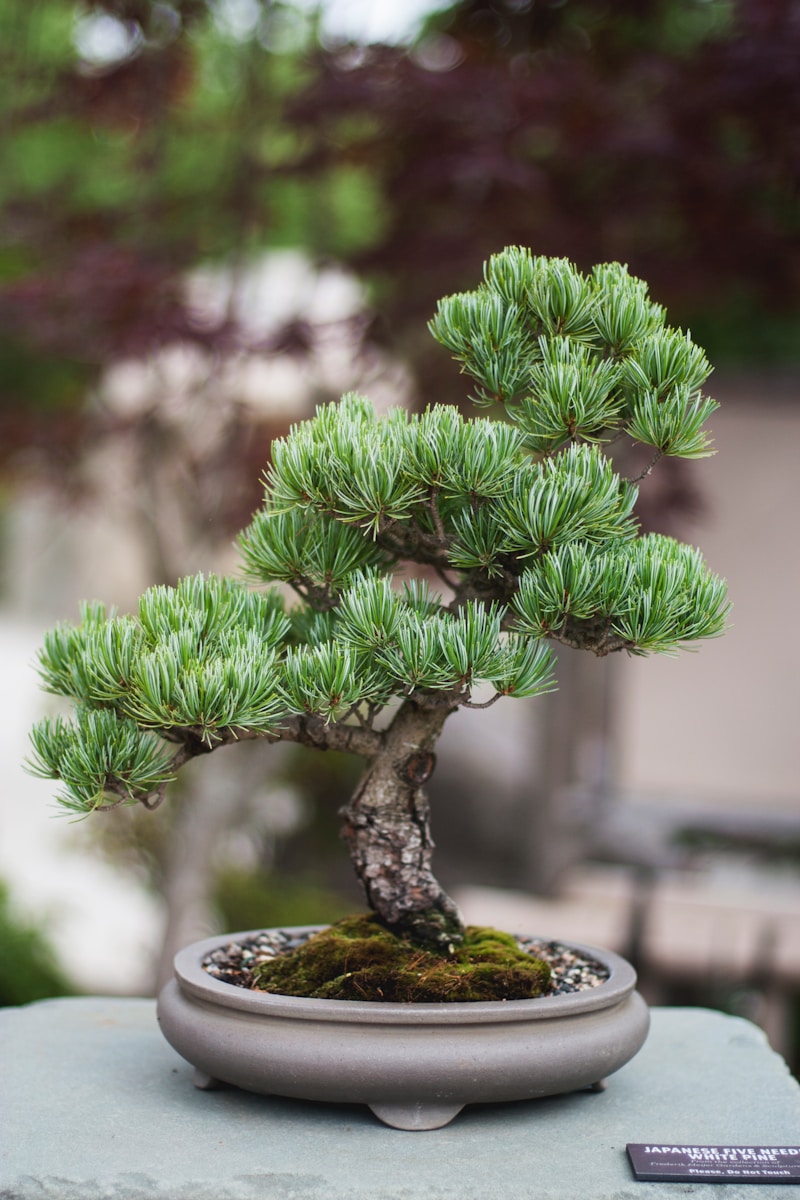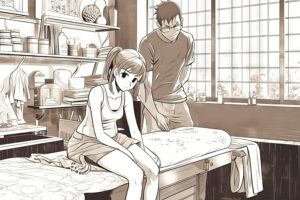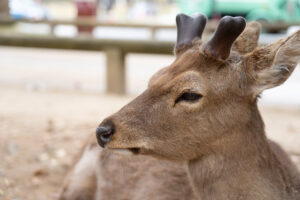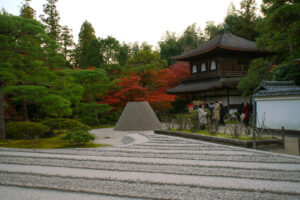Bonsai, the art of cultivating miniature trees, traces its roots back to ancient China, where it was originally practiced as “penjing” around 1,000 years ago. However, it was the Japanese who refined and popularized the art form, giving it the name we know today: bonsai, which translates to “planted in a container.” The history of bonsai is intertwined with the history of Japanese culture, reflecting the country’s reverence for nature, harmony, and simplicity.
In its early days, bonsai was primarily enjoyed by the elite classes, including aristocrats and Buddhist monks, who saw the miniature trees as symbols of refinement and contemplation. Bonsai cultivation was considered a meditative practice, requiring patience, skill, and a deep understanding of horticulture. Over time, bonsai spread beyond the confines of the aristocracy, becoming accessible to a broader segment of society.
Bonsai embodies the Japanese aesthetic principle of “wabi-sabi,” which celebrates the beauty of imperfection and transience. Each bonsai tree is a unique expression of nature, carefully shaped and pruned to evoke a sense of harmony and balance. The art form emphasizes the interplay between the tree, its container, and the surrounding environment, creating miniature landscapes that capture the essence of the natural world.
For bonsai making tools direct from Japan, visit Shoply Japan!
Beyond its artistic appeal, bonsai holds profound cultural significance in Japan. It is deeply rooted in the country’s spiritual traditions, with many bonsai practitioners drawing inspiration from Zen Buddhism and Shintoism. Bonsai gardens are often designed to evoke sacred landscapes, with winding paths, tranquil ponds, and carefully placed rocks.
Today, bonsai has become a global phenomenon, cherished by enthusiasts around the world for its beauty, craftsmanship, and spiritual depth. Whether displayed in private gardens, public parks, or museum exhibitions, bonsai continues to captivate audiences with its timeless elegance and profound connection to the natural world. As we embark on this journey into the world of bonsai, we honor its rich history and cultural heritage, recognizing it as not just an art form, but a way of life.
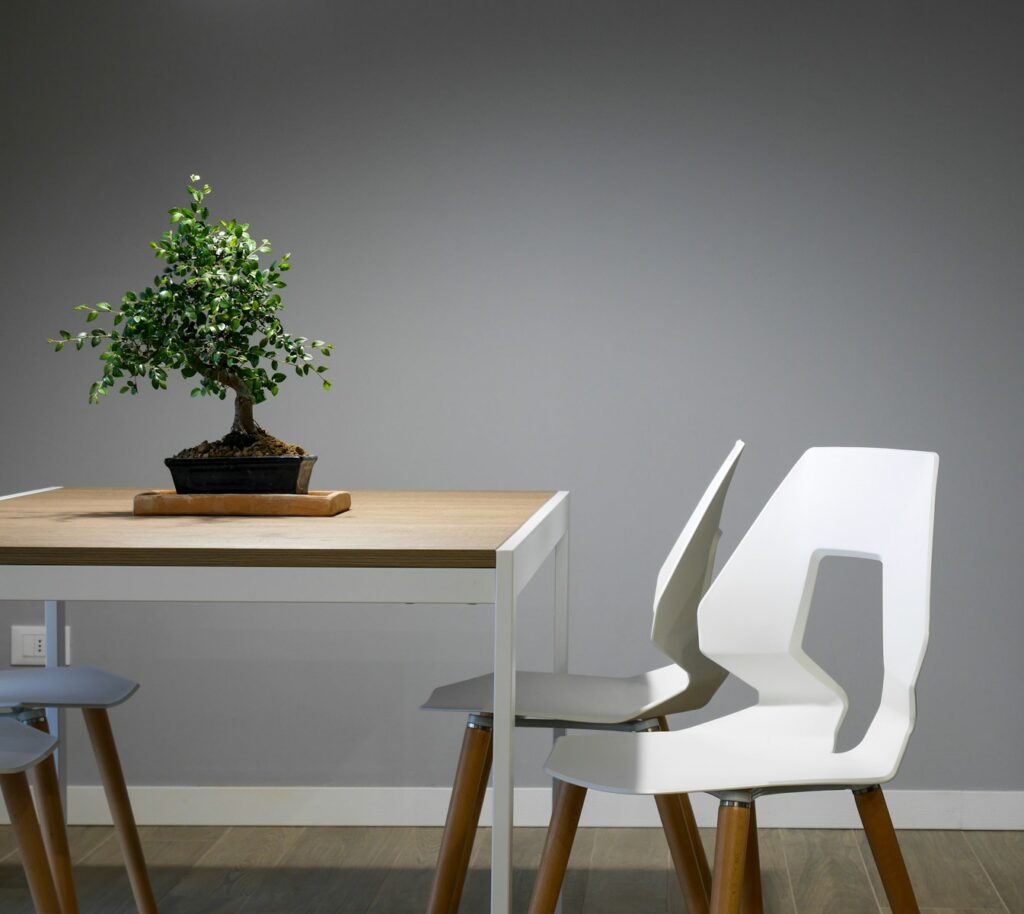
Getting Started with Bonsai
Embarking on the journey of bonsai cultivation is an exciting endeavor, but it’s essential to start on the right foot by making informed decisions about tree selection, styles, containers, and soil. For beginners, choosing the right tree species is crucial, as certain species are more forgiving and easier to care for than others. Common choices for beginners include Ficus, Juniper, Chinese Elm, and Jade, all of which are resilient and adaptable to different growing conditions.
Once you’ve selected a suitable tree species, it’s essential to understand the various bonsai styles and choose one that resonates with your aesthetic preferences and skill level. Formal upright, informal upright, slanting, cascade, and semi-cascade are some of the most popular bonsai styles, each with its own characteristics and techniques for shaping and pruning. Beginners may want to start with simpler styles, such as the formal upright or informal upright, before exploring more advanced styles like cascade or semi-cascade.
Equally important is selecting the appropriate container and soil for your bonsai. Bonsai containers, or pots, come in a variety of shapes, sizes, and materials, each influencing the overall aesthetic and health of the tree. It’s essential to choose a pot that complements the style and size of your bonsai while providing adequate drainage and root space. Additionally, selecting the right soil mix is crucial for ensuring proper water retention, aeration, and nutrient uptake. Bonsai soil mixes typically consist of a combination of organic and inorganic materials, such as Akadama, pumice, and lava rock, tailored to the specific needs of the tree species and bonsai style.
By carefully selecting the right tree species, understanding bonsai styles, and choosing appropriate containers and soil, beginners can lay a solid foundation for their bonsai journey, setting themselves up for success and enjoyment in the rewarding art of bonsai cultivation.
Bonsai Care
Bonsai care is a delicate balance of nurturing and sculpting, requiring attention to detail and a deep understanding of the needs of each individual tree. One of the most fundamental aspects of bonsai care is mastering watering techniques. Proper watering is essential for the health and vitality of bonsai trees, as they are confined to small containers with limited soil volume. The frequency and amount of water needed will vary depending on factors such as tree species, soil composition, and environmental conditions. As a general rule, bonsai should be watered when the soil starts to feel slightly dry to the touch, but not bone dry. Overwatering can lead to root rot, while underwatering can cause stress and dehydration. It’s crucial to develop a watering routine that takes into account the specific needs of your bonsai and adjusts accordingly based on seasonal changes and weather conditions.
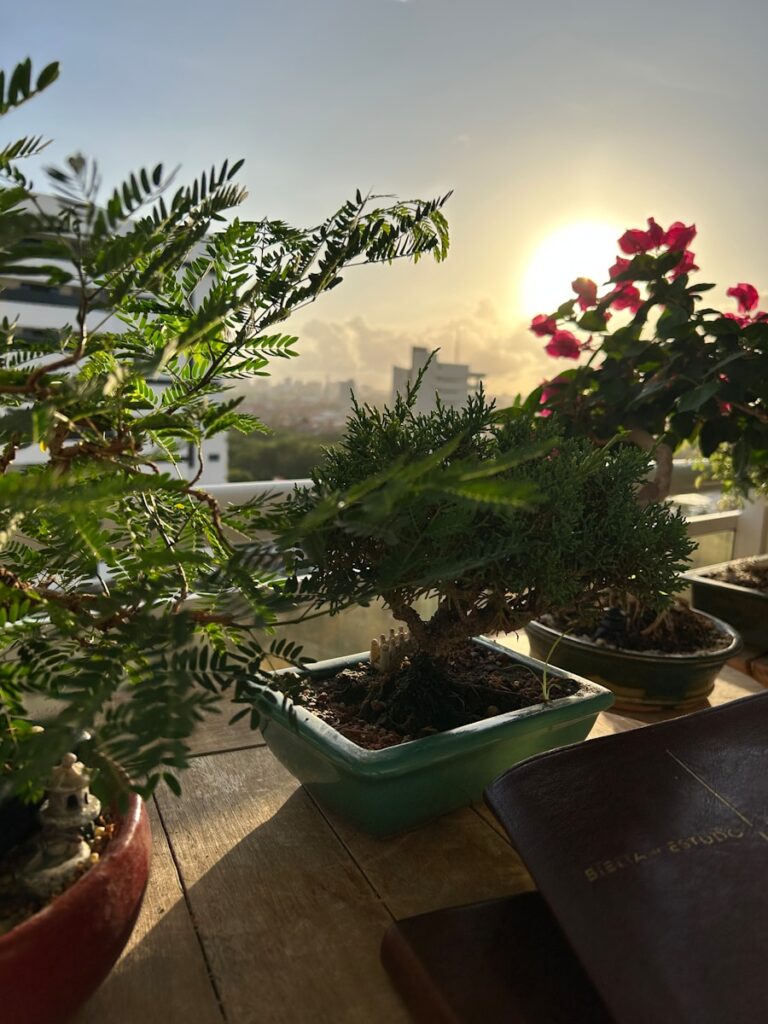
In addition to water, sunlight is another critical factor in bonsai care. Different tree species have varying sunlight requirements, ranging from full sun to partial shade. Understanding the light preferences of your bonsai is essential for ensuring healthy growth and vibrant foliage. Generally, most bonsai species thrive in bright, indirect light, although some may require more or less sunlight depending on their natural habitat and foliage characteristics.
Pruning and shaping are essential aspects of bonsai care, allowing enthusiasts to sculpt their trees into miniature works of art. Regular pruning helps maintain the desired size and shape of the bonsai, as well as promote ramification and balance. When pruning, it’s essential to use sharp, clean tools and make precise cuts to avoid damaging the tree. Additionally, wiring techniques are often employed to guide the growth of branches and create desired shapes and styles. Wiring should be done carefully and with consideration for the tree’s natural growth patterns, ensuring that it remains healthy and vigorous throughout the shaping process.
For Japanese Gardening tools direct from Japan, visit Shoply Japan!
By mastering watering techniques, understanding sunlight requirements, and practicing careful pruning and shaping, bonsai enthusiasts can ensure the health and beauty of their miniature trees, nurturing them into living works of art that bring joy and inspiration for years to come.
Repotting and Root Pruning
Repotting and root pruning are essential components of bonsai care, crucial for maintaining the health and vitality of your miniature trees. Knowing when and how to repot your bonsai is essential for ensuring its continued growth and development.
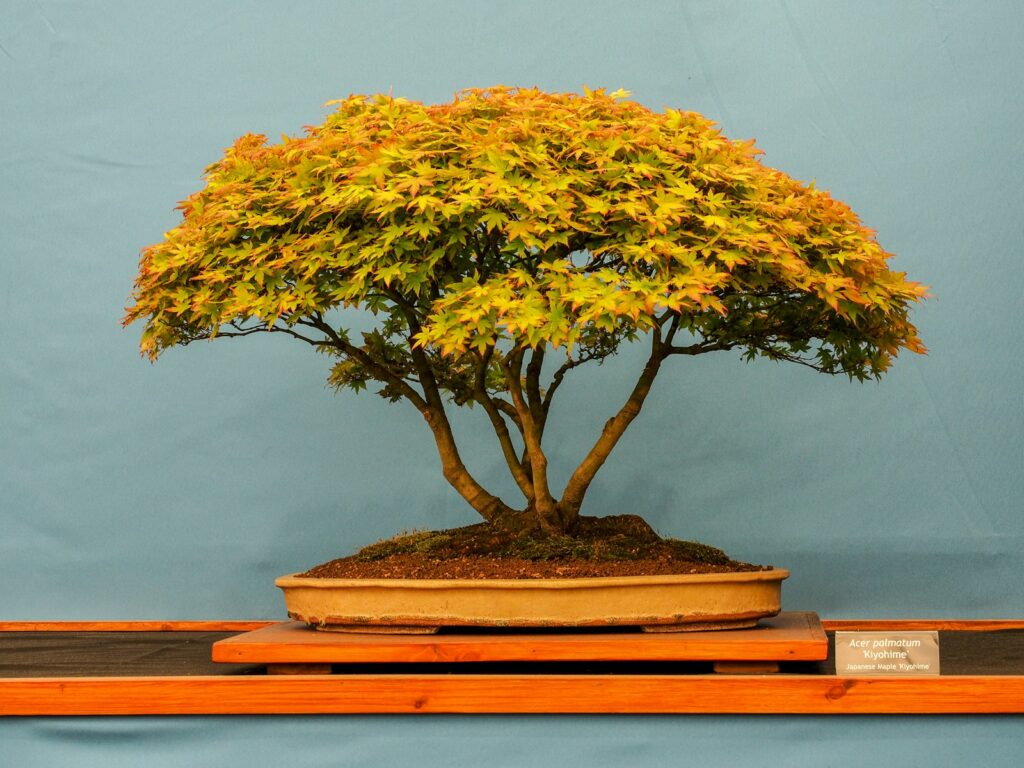
One of the key signs that your bonsai needs repotting is when the roots become pot-bound, meaning they have filled the container and are circling around the edges. Other indicators include reduced growth, yellowing leaves, and poor water retention in the soil. Repotting allows you to refresh the soil, remove old, compacted roots, and provide the tree with fresh nutrients and growing space.
When it comes time to repot your bonsai, it’s essential to follow a step-by-step guide to ensure success and minimize stress on the tree. Start by carefully removing the bonsai from its container, taking care not to damage the roots or branches. Gently shake off excess soil and inspect the root system, removing any dead or rotten roots with sharp, clean scissors or shears. Trim back long, thick roots to encourage new growth and improve the tree’s overall health.
Next, prepare a fresh pot with a layer of bonsai soil in the bottom, ensuring that it has adequate drainage holes. Position the bonsai in the center of the pot, spreading out the roots evenly and adding more soil around them until the roots are covered. Press the soil down firmly to eliminate air pockets and water the bonsai thoroughly to help settle the soil.
Root pruning is often performed in conjunction with repotting and involves trimming the roots to maintain their health and prevent them from becoming overly crowded. Root pruning should be done carefully and conservatively, as excessive pruning can stress the tree and inhibit growth. It’s generally recommended to perform root pruning every two to three years for most bonsai species, although the frequency may vary depending on the tree’s growth rate and container size.
By understanding the signs that your bonsai needs repotting, following a step-by-step repotting guide, and practicing prudent root pruning techniques, you can ensure the long-term health and vigor of your miniature trees, fostering their growth and beauty for years to come.
Common Bonsai Pests and Diseases
Despite the careful attention and meticulous care bonsai enthusiasts provide, these miniature trees are not immune to pests and diseases. Recognizing common bonsai pests and diseases is crucial for maintaining the health and vitality of your bonsai collection.
Common pests that can afflict bonsai include aphids, spider mites, scale insects, and caterpillars, among others. These pests can cause damage to leaves, stems, and roots, leading to stunted growth, yellowing foliage, and in severe cases, death of the tree. Identifying pests early is key to preventing widespread infestations and minimizing damage to your bonsai. Regular inspection of your bonsai for signs of pest activity, such as visible insects, webbing, or distorted foliage, can help you catch problems before they escalate.
In addition to pests, bonsai are susceptible to a variety of diseases, including fungal infections, bacterial diseases, and viral infections. These diseases can manifest as discolored or distorted foliage, lesions on stems or branches, and overall decline in the tree’s health. Proper hygiene practices, such as keeping tools clean and sterilized between uses, can help prevent the spread of disease in your bonsai collection. Adequate air circulation, proper watering practices, and avoiding over-fertilization can also help reduce the risk of disease.
Prevention is key when it comes to managing pests and diseases in bonsai. Implementing cultural practices that promote overall tree health, such as regular pruning, proper watering, and appropriate fertilization, can help keep pests and diseases at bay. Additionally, applying horticultural oils or insecticidal soaps can help control pests without harming beneficial insects or the environment.
If pests or diseases do occur, it’s essential to take swift action to address the problem. Treatment options may include applying pesticides, fungicides, or biological control agents, depending on the nature and severity of the infestation or infection. Consulting with a bonsai expert or horticultural professional can provide guidance on the most effective treatment options for your specific situation.
By staying vigilant, practicing good bonsai hygiene, and taking prompt action to address pest and disease issues, you can help keep your bonsai collection healthy and thriving for years to come.
Advanced Bonsai Techniques
As bonsai enthusiasts gain experience and confidence in their skills, they may wish to explore advanced techniques that allow for greater creativity and experimentation in bonsai cultivation. Advanced bonsai techniques, such as air-layering, grafting, and creating bonsai from nursery stock or collected material, offer opportunities to refine and customize the characteristics of bonsai trees.
Air-layering is a propagation technique used to create new bonsai trees from established specimens. This method involves removing a ring of bark from a branch or trunk, encouraging the formation of roots at the site of the incision. Once roots have developed, the branch can be removed from the parent tree and potted as a separate bonsai. Air-layering allows bonsai enthusiasts to propagate new trees while preserving the unique characteristics of the parent plant, such as trunk shape, bark texture, and foliage.
For Japanese Nature Books direct from Japan, visit Shoply Japan!
Grafting is another advanced technique used to change or improve the characteristics of bonsai trees. By attaching a branch or bud from one tree onto another tree’s trunk or branch, bonsai artists can introduce new varieties, alter the tree’s growth habits, or repair damaged or undesirable features. Grafting requires precision and skill to ensure successful integration of the graft and compatibility between the rootstock and scion.
Creating bonsai from nursery stock or collected material is a rewarding challenge that allows bonsai enthusiasts to exercise their creativity and vision. Nursery stock, such as young trees or shrubs purchased from garden centers, provides a blank canvas for shaping and styling into bonsai. Collected material, such as wild or landscape trees, offers the opportunity to work with mature specimens and incorporate unique characteristics like interesting trunk shapes or aged bark.
While advanced bonsai techniques require patience, practice, and a deep understanding of horticulture, they offer endless possibilities for artistic expression and mastery in bonsai cultivation. By embracing these techniques and pushing the boundaries of traditional bonsai practices, enthusiasts can elevate their craft and create truly exceptional works of living art.
Bonsai Display and Appreciation
Choosing the right display stand or tokonoma for your bonsai is essential to showcase the tree’s beauty and character effectively. The display should complement the bonsai without overshadowing it. Traditional Japanese tokonomas are alcoves specifically designed to exhibit art pieces, including bonsai. When selecting a stand or tokonoma, consider the size and style of your bonsai. The stand’s material and color should enhance the tree’s aesthetics, creating a harmonious overall presentation.
Tips for creating a harmonious bonsai display involve several considerations. First, understand the principles of balance and asymmetry in bonsai aesthetics. Place the bonsai slightly off-center on the display stand to create a dynamic and natural appearance. Additionally, choose accompanying elements thoughtfully, such as accent plants, figurines, or scrolls, to enhance the bonsai’s story and visual impact. Pay attention to the season and adjust the display accordingly; for instance, seasonal flowers or themed decorations can complement the bonsai’s seasonal characteristics.
Appreciating the artistry and philosophy behind bonsai goes beyond mere admiration of a miniature tree. Bonsai encapsulates centuries of Japanese aesthetics and Zen philosophy, emphasizing harmony, balance, and the beauty of imperfection. Each bonsai tells a story—of endurance, adaptation, and the passage of time. The artistry lies in shaping and nurturing a living tree into a sculptural masterpiece that evokes nature in its essence. Bonsai appreciation involves understanding the techniques of bonsai cultivation, such as pruning, wiring, and repotting, which are akin to a dialogue between the artist and the tree.
Furthermore, appreciating bonsai extends to mindfulness and patience. Observing a bonsai over time reveals its seasonal changes and growth patterns, fostering a deep connection with nature and the passage of time. Ultimately, bonsai appreciation is about finding tranquility and beauty in the miniature world of these exquisite trees, inviting contemplation and reflection on the broader themes of life and art.
For those venturing into the captivating world of bonsai, remember these key points to set yourself on a rewarding journey. Firstly, start with the right tree species suited to your environment and level of experience. Beginner-friendly species like Ficus, Juniper, or Chinese Elm are ideal choices. Secondly, prioritize proper care techniques including watering, fertilizing, and pruning. Understanding the specific needs of your bonsai tree will ensure its health and longevity.
Next, embrace the creative aspects of bonsai by exploring different styles and techniques. Experiment with wiring and shaping to imbue your bonsai with unique character and expression. Remember that each bonsai is a living artwork—a collaboration between nature and the artist.
As you progress in your bonsai journey, consider the importance of patience. Bonsai cultivation is a slow and meditative process, requiring dedication and mindfulness. Be prepared to learn from your successes and setbacks alike, as each experience contributes to your growth as a bonsai enthusiast.
Above all, continue to educate yourself about bonsai through books, workshops, and interactions with fellow enthusiasts. The world of bonsai is vast and constantly evolving, offering endless opportunities for learning and inspiration. Join bonsai clubs or online forums to share knowledge and experiences with like-minded individuals.
Finally, never hesitate to experiment and push boundaries in your bonsai practice. Bonsai is as much about creativity and personal expression as it is about horticultural techniques. Embrace the journey with enthusiasm and curiosity, and let your passion for bonsai flourish.
In closing, the art of bonsai rewards patience, dedication, and a deep appreciation for nature’s beauty. Let your bonsai journey be a source of joy, tranquility, and continuous discovery. Happy bonsai growing!
